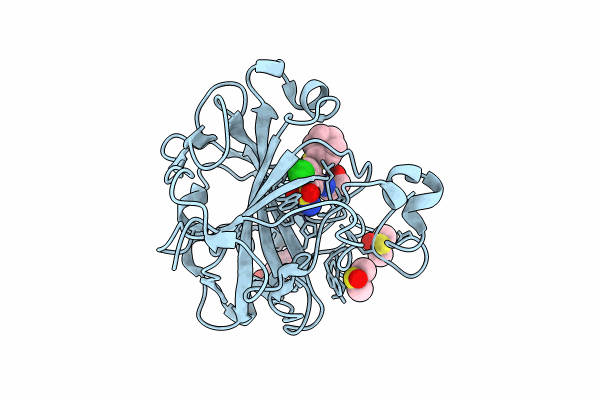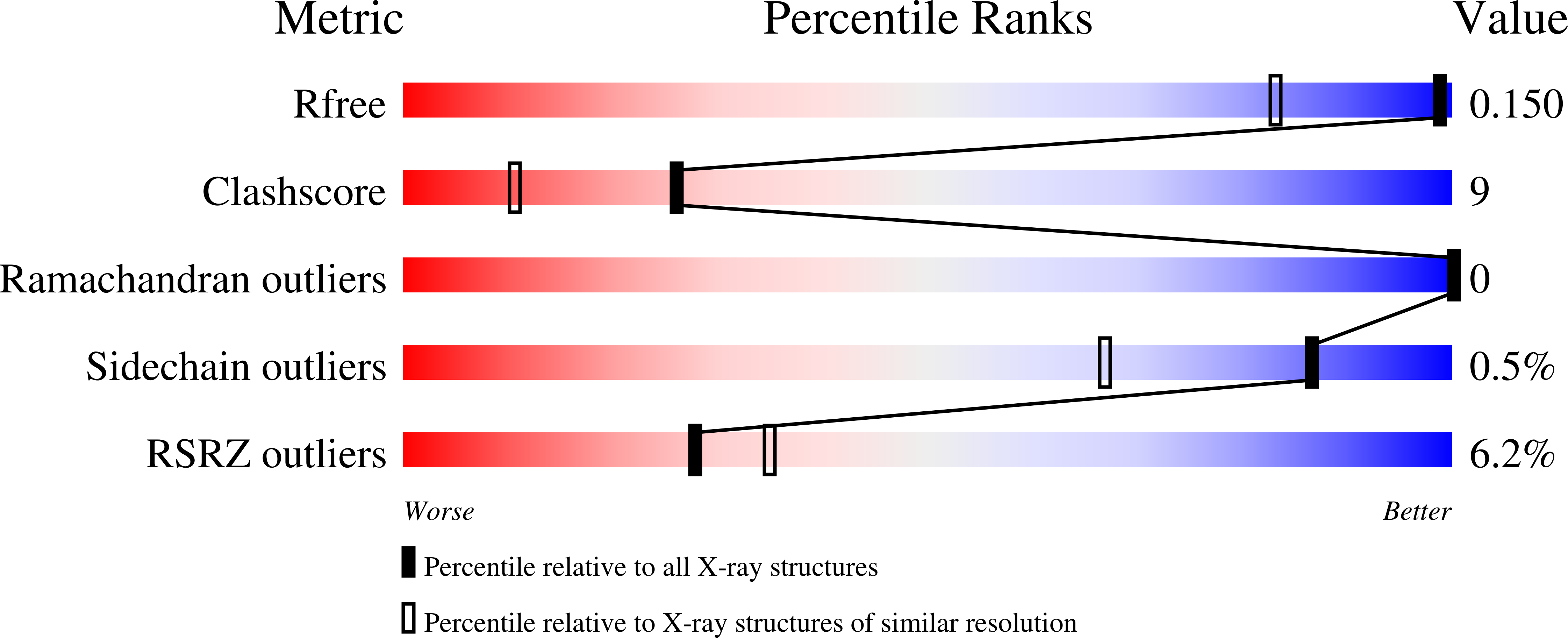
Deposition Date
2023-12-04
Release Date
2024-10-16
Last Version Date
2024-10-16
Entry Detail
PDB ID:
8RBP
Keywords:
Title:
Crystal structure of chimeric human carbonic anhydrase IX with 4-chloro-2-(cyclohexylsulfanyl)-N-(2-hydroxyethyl)-5-sulfamoylbenzamide
Biological Source:
Source Organism:
Homo sapiens (Taxon ID: 9606)
Host Organism:
Method Details:
Experimental Method:
Resolution:
1.15 Å
R-Value Free:
0.14
R-Value Work:
0.11
R-Value Observed:
0.12
Space Group:
P 1 21 1


